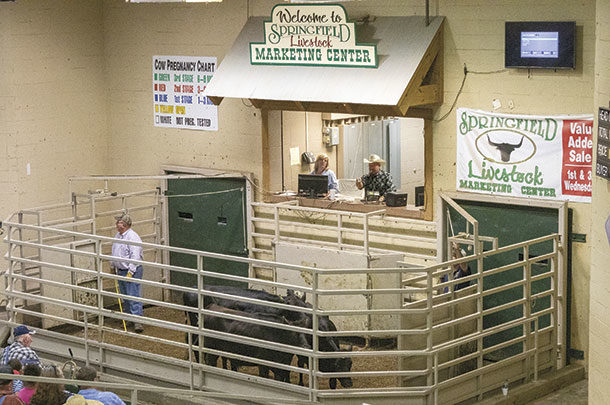Editor’s note: This is the first article in a three-part series. Though ranchers keep their business matters private, the one bit of information most will share (at least among their peers) is the price received for their calves. However, when it comes to profitability, that price is only one of three pieces of the puzzle. The remaining two are the productivity level of the ranch (i.e., number of calves weaned, total pounds weaned, etc.) and the total expenses required to achieve that level. Let’s look at all three.
Beef producers cannot control average market price, though they do control on which side of the seasonal or annual average price their calves land. They do, however, control their expenses and, along with Mother Nature, control their productivity. Combine the latter two pieces, and you have a ranch’s unit cost of production (UCOP), a measure that producers have full responsibility for. Without knowledge of UCOP, market prices have little meaning.
UCOP and break-even prices represent the integrated production/expense side of profitability. Though often used interchangeably, the two terms are not the same.
UCOP is determined by dividing total expenses (for the cow-calf enterprise) by units produced (total pounds weaned is most common, but you can also determine UCOP per weaned calf or per breeding female). Producers with a well-defined calving season who wean once (or twice) annually can easily determine total pounds weaned. For those who calve continuously, the weaning weight of calves born for an entire fiscal year should be included in the units produced.
Relative to pounds weaned, determining total expenses is more laborious. Yet not knowing total cost precludes determination of UCOP.
Total expenses are the sum of annual variable and fixed costs. Variable costs are those directly associated with the cow herd, such as fed feed, cattle depreciation, vet and health, and labor associated with cattle herd. Fixed costs are (overhead) expenses that accompany ranch ownership and are mostly independent of cattle inventory: depreciation (machinery, equipment, and improvements); property taxes; insurance; infrastructure construction and maintenance; mortgage interest and ownership compensation.
If a ranch has only one business enterprise within the overall operation, then assigning fixed costs is simple. However, most ranches have more than one enterprise (e.g., cattle and hay or wildlife or recreation) that should be monitored and evaluated separately. Therefore, a managerial or enterprise accounting system (as opposed to one that focuses strictly on tax accounting) is necessary, whereby revenues and expenses are allocated by enterprise to fairly assess profitability. Otherwise, the cattle operation bears all costs, allowing other enterprises to appear very profitable.
University of Nebraska Extension educator Aaron Berger summarized five ways to reduce UCOP:
- Spend less to achieve the same production
- Spend less and increase production
- Decrease costs with a relatively smaller decrease in expected production
- Maintain expenses and increase production
- Increase expenses with an expected greater increase in production
As a precaution, systems thinking should be employed when considering management decisions aimed at reducing UCOP. Often, there can be ripple effects that, though beneficial to one enterprise, may have a negative impact on beef production or total ranch profitability.
Break-even price is calculated as (total expenses minus secondary revenue) divided by units of production (pounds of weaned calves). For cow-calf producers, a typical source of secondary revenue is from the sale of culled females and bulls leaving the enterprise. Secondary revenue varies annually according to the market price and the number and type of inventory sold (e.g., culled yearling heifers, open cows, culled bred cows, culled bulls). Break-even price is the weaned calf value (dollars per hundredweight) associated with a zero balance (no profit or loss) for the cow-calf enterprise. Revenue from the quantity weaned and marketed at this price, combined with the secondary revenue, will cover all enterprise expenses. Often depreciation and/or ownership compensation is not included in the calculation, resulting in an artificially low break-even price.
Inclusion of secondary revenue generally results in break-even price being lower than the affiliated UCOP. While UCOP is fairly comparable across cow-calf enterprises within a region, break-even prices are operation- and enterprise-specific. For example, consider neighboring ranchers. Rancher A purchases replacement females and sells only old, open or ornery cows as culls in the fall. Rancher B does the same thing, except he retains his cull cows on winter small-grain pastures until March in order to capture a seasonally higher market cow price. Though weaned calf appearance, calf market value and UCOP per pounds of weaned calf might be similar, it is likely break-even price could be appreciably different for the neighboring ranches. Variation in annual culling level and value of market cows and bulls makes comparing break-even prices across years a challenge.
Any producer can use their UCOP or break-even price as key performance indicators to measure their improvement over time. Be sure to include all expenses in order to have the most accurate figure. Given the influence of inflation on an operation’s expenses, producers will likely need to increase productivity or restructure their fixed costs in order to stay close to their calves’ average market prices. If a producer’s break-even price is above the market price received for his product, he is using equity to stay in business. Heavy weaning weights and high calf prices will always make for great conversation. But independent from the unit cost of production or an associated break-even price, neither weight nor price may be worthy of boasting.
This article is part one of a three-part series. Be sure to read part two, “Unit cost of production expressions,” and part three, “Evaluation stocker cattle cost of production and profitability.”










